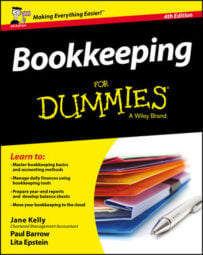When your business offers discounts to customers, a good bookkeeping tactic is to track the sales discounts in a separate account so you can keep an eye on how much you discount sales in each month.
Most businesses occasionally offer sales discounts to generate more sales. Sales discounts are usually in the form of a “percentage off” discount on purchases. If you find you’re losing more and more money to discounting, look closely at your pricing structure and competition to find out why it’s necessary to frequently lower your prices in order to make sales.
You can track discount information very easily by using the data found on a standard sales register receipt. The following receipt from a bakery includes sales discount details.
| Item | Quantity | Price | Total |
|---|---|---|---|
| White Serving Set | 1 | $40.00 | $40.00 |
| Cheesecake, Marble | 1 | $20.00 | $20.00 |
| Cheesecake, Blueberry | 1 | $20.00 | $20.00 |
| $80.00 | |||
| Sales Discount @ 10% | ($8.00) | ||
| $72.00 | |||
| Sales Tax @ 6% | $4.32 | ||
| $76.32 | |||
| Cash Paid | $80.00 | ||
| Change | $3.68 |
From this example, you can see clearly that the store takes in less cash when discounts are offered. When recording the sale in the Cash Receipts journal, you record the discount as a debit. This debit increases the Sales Discount account, which is subtracted from the Sales account to calculate the Net Sales.
Here's what the bakery’s entry for this particular sale looks like in the Cash Receipts journal:
| Debit | Credit | |
|---|---|---|
| Cash in Checking | $76.32 | |
| Sales Discounts | $8.00 | |
| Sales | $80.00 | |
| Sales Tax Collected | $4.32 | |
| Cash receipts for April 25 |
If you use a computerized accounting system, add the sales discount as a line item on the sales receipt or invoice, and the system automatically adjusts the sales figures and updates your Sales Discount account.

